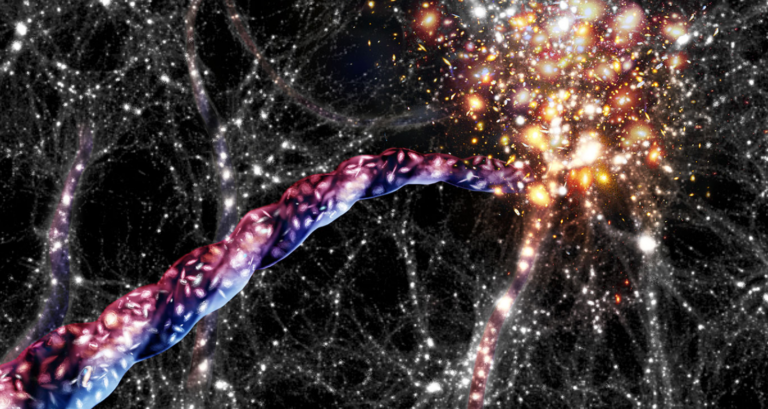Cosmic filaments could possess the highest rate of rotation in the vastness of outer space, this is the manner in which they spin.
Cosmic filaments, which are dense and thin strands of dark matter and galaxies stretching hundreds of millions of light year, have been observed to twist like corkscrews. These colossal formations, which account for much of the gravity in the universe, stretch and tug matter to galaxy clusters at their tips. Until recently, galaxy clusters were learnt to be the largest rotating structures in the universe.
Cosmologist Noam Libeskind, working at the Leibniz Institute for Astrophysics in Potsdam, Germany, has given evidence to task the dominant thought process that spin is off at the levels of galaxy clusters. Its smaller scale torques were believed to be impossible to generate on the larger scales. It becomes quite perplexing when one gets to understand that filaments spin; given the fact that galaxies within them are tiny. Speaking to<|reserved_special_token_259|>, Mark Neyrinck, a cosmologist at the University of the Basque Country in Bilbao, Spain, added that the rotation of galaxies and filaments is not yet fully explained by any overarching theory.
To support this conclusion, Neyrinck and his team took a model of the universe and placed it into the computer to demonstrate that filaments can indeed rotate. Thus, they were able to show this phenomenon by estimating velocities of the dark matter clumps moving along a filament.
At the same time Libeskind and his group focused on the idea of rotation in the physical world. They observed the motion of galaxies and determined the velocities of galaxies moving across the plane of a filament.
When examining rotation, both teams employed dissimilar techniques but found comparable signs of rotational velocity. This is a positive sign, as Neyrinck pointed out, indicating that their research interests are aligned.
Further on, the scientists plan to find out how these enormous space structures started to rotate. Such process Libeskind raises the question of what is at work here, and a desire to understand it further.
It stands for a computer simulation that shows how a cosmic filament twists galaxies and dark matter as it spins. These filaments draw together matter and cause it to rotate and coalesce towards clusters of matter located at the ends of the filaments are demonstrated using comets as “test particles”.
Do not forget to share your opinion with us to provide you with the best posts !




0 Comments